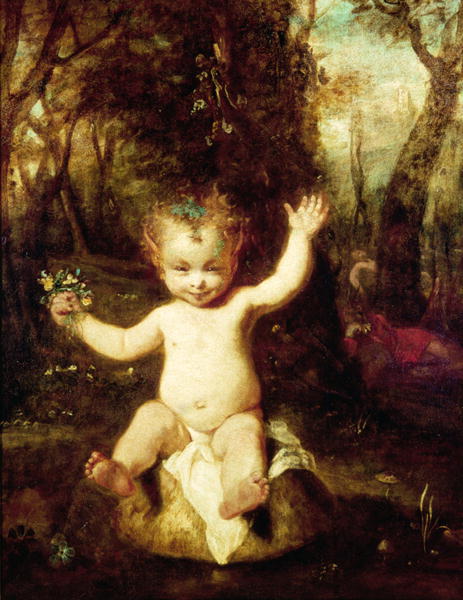“Changeling: The Fey-Born Trickster of Stolen Children”
Changelings: Fey-Born Replacements of Stolen Children

Changelings are eerily beautiful, human-like children with subtly unnatural features—pale skin, mismatched eyes, and an uncanny grace—left in place of stolen mortal infants. Guided by a mysterious call, they navigate mortal society while uncovering their fey heritage, their very presence whispering of otherworldly trickery and dark bargains.
Appearance
Changelings resemble perfectly human children, yet subtle signs betray their fey origins: luminous pale skin, slightly pointed ears, and eyes of mismatched or unnatural color. Their movements are unnervingly graceful, and they exude an aura of uncanny innocence that unsettles even the most wary observer.
Behaviour
Quiet, observant, and often solitary, changelings mimic the behaviors of those around them to blend in. Fey curiosity drives them to explore hidden places and secret knowledge, and when threatened, they prefer flight, concealment, or subtle magical trickery over direct confrontation.
Habitat
Changelings are typically found in human settlements, often in the homes of unwitting foster families. In folklore, they are also drawn to forests, glades, and other wild fey-touched locales, particularly those near their true fey parentage.
Modus Operandi
Cunning, elusive, and manipulative, changelings rely on mimicry, illusion, and subtle influence to survive. They may sway caregivers and neighbors, sowing mischief or altering behavior, and when compelled to fight, they employ stealth, misdirection, and minor innate fey magic rather than brute force.
Motivation
Guided by a mysterious fey call, changelings seek knowledge of their true heritage, often torn between mortal life and embracing their fey nature. Their drives blend curiosity, self-preservation, and the yearning to uncover or reclaim the family stolen from them.
Changeling 5e 2024
Changeling, Pathfinder
Changeling

Medium fey, chaotic neutral
Armor Class: 14 (natural armor)
Hit Points: 45 (10d8)
Speed: 30 ft.
| STR | DEX | CON | INT | WIS | CHA |
|---|---|---|---|---|---|
| 10 (+0) | 16 (+3) | 12 (+1) | 14 (+2) | 13 (+1) | 18 (+4) |
Saving Throws: Dex +5, Wis +3, Cha +6
Skills: Deception +8, Insight +3, Perception +3, Stealth +5
Damage Resistances: Psychic; Bludgeoning, Piercing, and Slashing from Nonmagical Attacks
Condition Immunities: Charmed
Senses: Darkvision 60 ft., passive Perception 13
Languages: Common, Elvish, Sylvan
Challenge: 4 (1,100 XP)
Lore
Changelings are the children of mortal parents and fey or hag lineage, often left in place of stolen infants. They appear as perfectly human children, though subtle traits—pale, almost luminous skin, mismatched eyes, and unnerving grace—betray their otherworldly origins. At puberty, many hear a mysterious, hypnotic call guiding them to their fey heritage. Those who follow it may discover the secrets of their parentage, while those who ignore it forge their own destinies. Changelings are known for cunning, mischief, and a dangerous charm that belies their apparent innocence.
Shapechanger.
The changeling can use its action to polymorph into a Small or Medium humanoid it has seen, or back into its true form. Its statistics remain the same in each form. Equipment isn’t transformed. It reverts to its true form if it dies.
Innate Spellcasting. (Charisma-based, DC 14, +6 to hit)
The changeling can cast the following spells without material components:
- At will: Minor Illusion, Disguise Self
- 1/day each: Charm Person, Misty Step
- 2/day each: Mirror Image, Suggestion
Fey Stealth.
While in dim light or darkness, the changeling can take the Hide action as a bonus action.
Actions
Claw. Melee Weapon Attack: +5 to hit, reach 5 ft., one target. Hit: 7 (1d6 + 3) slashing damage. This is the changeling’s primary attack in combat.
Dagger (Optional). Melee or Ranged Weapon Attack: +5 to hit, reach 5 ft. or range 20/60 ft., one target. Hit: 5 (1d4 + 3) piercing damage.
Improvised Weapon (Optional). Melee or Ranged Weapon Attack: +5 to hit, reach 5 ft. or range 20/60 ft., one target. Hit: 4 (1d4 + 3) damage (type varies by object).
Hypnotic Gaze (Recharge 5–6). The changeling targets one creature it can see within 30 feet. The target must succeed on a DC 14 Wisdom saving throw or be charmed until the end of its next turn. While charmed in this way, the target is incapacitated and has a speed of 0.
Fey Trickery. The changeling can use its action to create an illusory duplicate of itself. Until the start of its next turn, attackers have disadvantage on one attack roll against it.
Reactions
Unnerving Dodge. When a creature the changeling can see attacks it, the changeling can impose disadvantage on the attack roll.
Tactics
Changelings avoid direct confrontation when possible. They rely on stealth, illusions, and charm to manipulate enemies or create openings. In combat:
- The claw is the primary attack, used to quickly exploit openings.
- Daggers or improvised weapons are employed situationally, particularly for ranged attacks or environmental improvisation.
- They use Hypnotic Gaze to disable key targets and Fey Trickery/Mirror Image to stay elusive.
- If overwhelmed, the changeling will polymorph into a mundane humanoid and retreat, often using misdirection to escape unnoticed.
Changeling

“Changling” – This young woman has a slender frame and a beautiful face, yet there’s something vaguely unnerving about her appearance. Her skin is unnaturally pale, her hair is dark, and each of her eyes is a different color.
Born of mysterious origins and raised by unknowing foster parents, changelings are the children of hags and their tricked lovers. Most do not know of their monstrous origins, but there comes a time in every changeling’s life when these roots begin to call out to their host, urging the confused girl toward some end she cannot identify.
Changelings are always female, tall, and slender. A changeling’s hair is typically dark and her skin abnormally pale, but she otherwise looks for all practical purposes like a member of her father’s race. A frequent but not universal trait of changelings is their mismatched, different-colored eyes. Upon reaching puberty and adulthood, the average changeling stands approximately 5-1/2 feet tall and weighs about 110 pounds.
| Changeling CR 1/2 |
| XP 200 Female changeling witch 1 LN Medium humanoid (changeling) Init -1; Senses Darkvision 60 ft.; Perception +2 |
| DEFENSE |
| AC 10, touch 9, flat-footed 10 (-1 Dexterity, +1 natural) hp 8 (1d6+2) Fort +1, Ref -1, Will +4 |
| OFFENSE |
| Speed 30 ft. Melee 2 claws +0 (1d4+1) Special Attacks hexes (cauldron) Witch Spells Prepared (CL 1st; concentration+3) 1st – hypnotism (DC 14), sleep (DC 14) 0 (at will) – daze (DC 13), light, touch of fatigue (DC 13) Patron transformation |
| STATISTICS |
| Strength 10, Dexterity 8, Constitution 12, Intelligence 15, Wisdom 14, Charisma 15 Base Atk +0; CMB +0; CMD 9 Feats Brew Potion, Combat Casting Skills Craft (alchemy) +10, Heal +6, Knowledge (arcana) +6, Spellcraft +6 Languages Common, Draconic, Elven, Orc SQ hulking changeling, witch’s familiar (spider) |
| ECOLOGY |
| Environment any Organization solitary Treasure standard (quarterstaff, other treasure) |
Ecology
When a hag of any sort conceives a child with a man, the result is a changeling. The male parent is usually eaten or killed by his partner before he can see the offspring, or else flees the area in shame upon discovering the true nature of his lover, and the hag herself interacts with the child just long enough to set it on the stoop of some unsuspecting family or temple. Depending on the race of her father, a changeling can resemble any type of humanoid, including dwarves, gnomes, and even orcs and goblins.
A changeling and her new family are never aware of the strange child’s true parents, but in most cases everyone involved is keenly aware that there is something odd about the frail child with the ghostly pallor. Even the young girl herself can easily see that she possesses abilities others do not ‘powers that are subtle at younger ages and only truly begin to manifest themselves when she reaches adolescence.
It is around puberty that the changeling begins to hear what hags refer to as ‘the call,’ a hypnotic, spiritual voice that only she can hear and that beckons her to travel. To where, the changeling does not know, but the underlying prospect of finding out her true origins is often enough to drive the girl to seek out the source of this mystical voice.
The voice is in fact that of the changeling’s birth mother, who forms a coven with two others hags in order to summon her child back to her, now that she is old enough to fully transform into a hag. This transformative ritual is a barbaric one that only the most determined changelings willingly go through; upon arriving at the coven, it is usually too late to turn back for changelings who were merely drawn to the voice by curiosity. Those who seek power, however, identify with the hags, and happily go through the ordeal in order to unlock their dormant abilities.
Regardless of her desires, though, a changeling who has undergone the transformation cannot go back; once she becomes a hag, she remains a hag, and her mind turns as wicked as her form has turned hideous.
Changelings who ignore the call eventually cease to hear it. In this case, a hag mother sometimes disguises herself and ventures into civilization, seeking out her daughter. If she finds her, she lures the girl back to the coven, where she can perform the ritual of transformation. The process of performing the call or physically retrieving the changeling is taxing, though, and many hags find it easier to simply lure in another mate and birth another changeling in hopes that this one will heed the ever tantalizing call.
Habitat & Society

Raised wherever she will be accepted, a changeling has no real say in the habitat she grows up in. Families who inadvertently raise changelings often react in one of two ways toward the strange child’s development of supernatural powers: they either embrace the girl, nurturing her and her gift, or they disown her as an abomination, casting her out into a world of loneliness and resentment.
Of course, this reaction to her power often has a huge influence over the changeling’s course of action as a young adult. Changelings who are accepted by their adopted society often don’t see the need to follow their mothers’ voices, instead using their powers for their own ends, whereas shunned individuals almost always answer the call and become treacherous hags with embittered hearts and shattered souls.
Hags usually prefer to mate with humans, producing changelings that resemble humans. Changelings of other races do occur, but their attitude and outlook are much more dependent on the attitudes of their adoptive parents than on their racial background.
Changelings rarely band together with other changelings, as hags only seldom allow their unions to result in offspring, and changelings encountering others of their type may never recognize their shared origins. Thus, the abandoned offspring graft themselves into whatever society will accept them, adapting to new roles with remarkable ease. If a changeling chooses to heed the call that beckons her as a young woman, she quickly finds herself in an entirely different sort of society: hags, though accepting of their own brood, are quite unlike any other creatures, and their form of culture is so primitive and evil that it can hardly be called culture at all.
A changeling turned-hag follows the same patterns as her mother and other brethren, eventually charming an unwitting suitor and creating a changeling offspring of her own, repeating the vicious cycle.
Having no innate predisposition toward evil, a changeling’s values are solely a product of her environment, and any given individual is just as likely to perform evil as she is to act righteously. Often, though, a changeling’s slightly unusual appearance marks her as the target for harassment, potentially leading her toward a vengeful path. Any means of releasing innate magical energy is good enough for the changeling, and many become witches.
Section 15: Copyright Notice
Statistics from Pathfinder Roleplaying Game Bestiary 4 © 2013, Paizo Publishing, LLC; Authors: Dennis Baker, Jesse Benner, Savannah Broadway, Ross Byers, Adam Daigle, Tim Hitchcock, Tracy Hurley, James Jacobs, Matt James, Rob McCreary, Jason Nelson, Tom Phillips, Stephen Radney-MacFarland, Sean K Reynolds, F. Wesley Schneider, Tork Shaw, and Russ Taylor.
Ecology from Pathfinder 43: Haunting of Harrowstone. Copyright 2011, Paizo Publishing, LLC, Author: Michael Kortes
Changeling Characters
The children of one sidhe parent and one non-fey parent, and they may be ignorant of their unusual heritage. They look mostly human but may have slightly pointed ears, unusual birthmarks, or strangely colored eyes that hint at their sidhe parentage. This inherited template can be added to any Small or Medium humanoid, monstrous humanoid, or outsider.
Changelings are the offspring of hags and their lovers taken through magic or madness. Dropped off on doorsteps of prospective foster parents, changelings are raised by strangers. Typically tall, slender, dark haired, and attractive, changelings otherwise resemble their fathers’ race. They are always female, and their mismatched colored eyes and abnormally pale skin hint at their true heritage. At puberty, changelings receive ‘the call,’ a hypnotic spiritual voice that beckons them to travel and discover their true origins. Changelings who ignore this call choose their own destiny; those who heed it discover their ‘mother’ and may come into great power by transforming into hags themselves.
Changeling Overview
Lore:
- Changelings are born of one sidhe (or hag) parent and one non-fey parent.
- Often left on strangers’ doorsteps, raised away from their true heritage.
- Appear mostly human, sometimes with subtle fey traits: pointed ears, unusual eyes, pale skin, or birthmarks.
- At puberty, they receive “the call”—a mystical voice guiding them to discover their origins.
- Those who follow it may encounter their mother and gain hag-like powers.
- Those who ignore it can choose their own destiny.
- Changelings are always female.
1. Starting Ages
| Training Type | Base Adult Age | Dice Roll | Age Range | Example Classes |
|---|---|---|---|---|
| Intuitive | 15 | 1d4 | 16–19 | Barbarian, Oracle, Rogue, Sorcerer |
| Self-Taught | 16 | 1d6 | 16–21 | Bard, Cavalier, Fighter, Gunslinger, Paladin, Ranger, Summoner, Witch |
| Trained | 17 | 2d6 | 17–27 | Alchemist, Cleric, Druid, Inquisitor, Magi, Monk, Wizard |
How to roll: Add the dice roll to the base adult age.
2. Height and Weight
- Base Height: 4 ft. 2 in.
- Height Modifier: 2d4 in. → Result: 4’4” – 4’10”
- Base Weight: 85 lbs.
- Weight Modifier: 2d4 × 5 lbs → Result: 95 – 125 lbs
Roll Example:
- Height: 4’2” + 3 + 2 = 4’7”
- Weight: 85 + (3+2)×5 = 110 lbs
3. Standard Racial Traits
- Ability Scores: +2 Wisdom, +2 Charisma, –2 Constitution
- Size: Medium
- Type: Humanoid (changeling subtype)
- Base Speed: 30 ft.
- Languages: Common + primary host society language; high Intelligence may choose: Aklo, Draconic, Dwarven, Elven, Giant, Gnoll, Goblin, Orc
Defense Traits
- Natural Armor: +1
Offense Traits
- Claws: Two claw attacks, 1d4 damage each
Senses
- Darkvision: 60 ft.
4. Hag-Inherited Traits (choose one depending on mother’s hag type)
| Hag Type | Trait |
|---|---|
| Annis | Hulking Changeling: +1 racial bonus on melee damage |
| Green | Green Widow: +2 racial bonus on Bluff vs. sexually attracted creatures |
| Sea | Sea Lungs: Can hold breath rounds = 3× Con before drowning risk |
Alternate Traits (replace standard trait)
- Mist Child: +5% miss chance when under concealment/total concealment (replaces Hulking)
- Object of Desire: +1 caster level for charm person and charm monster (replaces Green Widow)
- Ocean’s Daughter: +1 trait bonus to Swim, auto-success on nonlethal swim checks (replaces Sea Lungs)
5. Favored Class Bonuses
| Class | Bonus |
|---|---|
| Oracle | +½ level for curse ability |
| Rogue | 1/6 of a new rogue talent |
| Witch | Add one bonus spell to familiar (1 level below max spell) |
6. Racial Archetype
- Dreamweaver (Witch; Changeling)
7. Racial Feats
- Mother’s Gift (prerequisites apply)
Section 15: Copyright Notice
Pathfinder Roleplaying Game Advanced Race Guide © 2012, Paizo Publishing, LLC; Authors: Dennis Baker, Jesse Benner, Benjamin Bruck, Jason Bulmahn, Adam Daigle, Jim Groves, Tim Hitchcock, Hal MacLean, Jason Nelson, Stephen Radney-MacFarland, Owen K.C. Stephens, Todd Stewart, and Russ Taylor.

 Buy me a coffee
Buy me a coffee